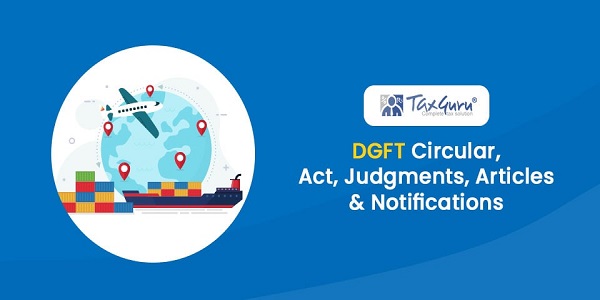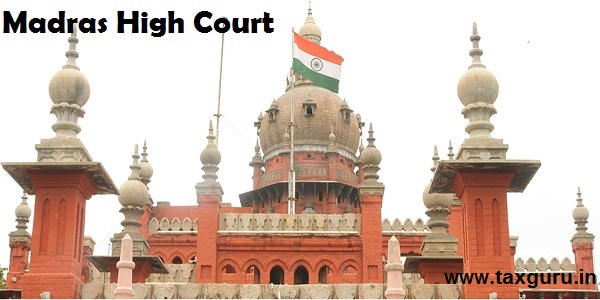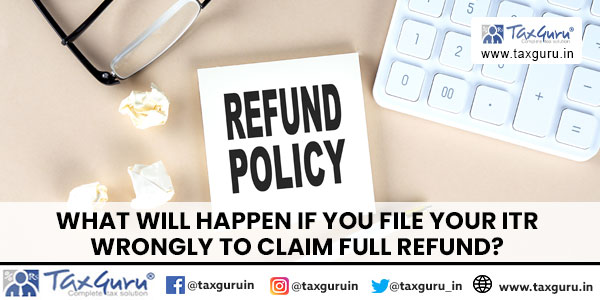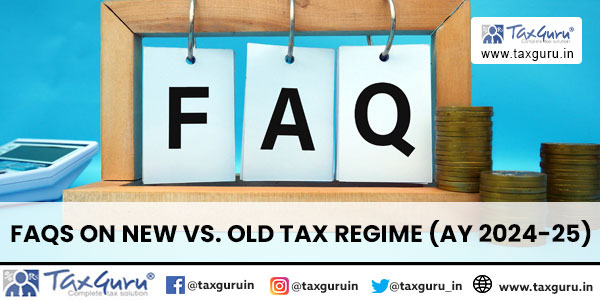Case Law Details
Special Bench Tribunal Ruling: If the Payer is of the bona fide belief that no part of the payment is chargeable to tax, he need not undergo the procedure of section 195 at all. The Tribunal has chosen not to follow the Karnataka High Court’s judgement in the case of Samsung Electronics. [ITO Vs Prasad Production Ltd. (ITA No. 663/Mds/2003)].
Facts:
Prasad Production Ltd. (assessee/ payer), an Indian company, was awarded a contract by the Tourism Department of Government of Andhra Pradesh to establish IMAX Theatre at Hyderabad. The assessee entered into an agreement with IMAX Ltd., Canada (IMAX) for purchase of equipment, maintenance and installation. As per the agreement, the total consideration was split into two parts, one for purchase of system and other for technology for transfer fee. The assessee remitted during the year under consideration a part remittance on account technology transfer fee without deduction of tax at source. The Assessing officer issued a notice to the assessee to show cause as to why the demand should not be raised under section 201 of the Income tax Act (Act). During the course of 201 proceedings, the assessee could not provide the break-up of amount remitted. On the basis of letters and copies of agreements filed by the assessee, the Assessing officer passed an order under section 201 and held that since the payment made was for a variety of services (installation charges, testing, supervision by IMAX personnel in India and training for projectionists), the amount remitted by the assessee was for provision of technical services in terms of section 9(1)(vii) of the Act. As the assessee did not obtain any order under section 195(2), 195(3) or 197, he held that the gross sum remitted was liable to tax under section 195 as per the decision of the Supreme Court in the case of Transmission Corporation of AP Ltd (239 ITR 587).
On appeal, the CIT(A) observed that the impugned payment represents consideration for installation, testing and operator training before the theater is ready for screening. Though the agreement provided for installation and training in the beginning, the amount of remittance represents a part of sale consideration of the equipment. Accordingly, he held that there is no ambiguity in regard to the portion which is taxable and portion which not taxable. As the entire sum is not chargeable to tax, he cancelled the order passed under section 201(1) and 201 (1A) of the Act.
On appeal to the Tribunal, the Honorable President constituted a Special Bench to hear and decide the matter.
Question before the Special Bench of Income tax Appellate Tribunal:
Whether for the purposes of sections 201(1) and 201 (1A), when an asssessee responsible for making payment to a non-resident, has not applied to the Assessing officer under section 195(2) for deduction of tax at source at lower or nil rate of tax, he is under statutory obligation to deduct tax at source on the entire payment to the non-resident treating the same as income chargeable to tax, in the light of decision of the Apex Court in the case of Transmission Corporation AP Ltd.?
Contention of the Revenue:
- The deduction to be made under section 195 is tentative only and is subject to the assessment in the case of deductee.
- Various circulars issued by the Central Board of Direct Tax (CBDT) were on specific issued and through they were beneficial in nature, they could not negate the main provisions of the Act.
- If the assessee is given the discretion to decide whether to deduct tax or not, he will sit in the chair of the Assessing officer and in that case, section 195 will become totally inoperative.
- The interpretation of the Supreme Court of section 195 in the case of Transmission Corporation (supra) has been followed by the Karnataka High Court in the case of Samsung Electronics (320 ITR 209). Since the law declared by the Supreme Court has to be followed under Article 141 of the Constitution, it becomes all the more incumbent for the Tribunal to follow the judgement of the Karnataka High Court (supra).
Contention of the Assessee:
- Deduction under section 195 was tentative; but still the assessee could contest the demand raised under section 201(1).
- As per section 4(2) tax was to be deducted at source or paid in advance only if the income was chargeable to tax under any provision of the Act.
- The obligation of TDS was a vicarious liability and basic assess ability was of the deductee only. Therefore, it was necessary always to determine the correct tax liability of the recipient of the income.
- Since section 201(1) covers section 195 also, the Assessing officer cannot proceed on a notional basis to raise demand under section 201(1).
- The liability of the deductee and deductor cannot be different and section 201(1) does not contemplate to determine any shortfall by the deductor. The assessee is not debarred from disputing the liability raised under section 201 of the Act.
- Attention was invited to the Circular no. 759 dated 18.11.1997, which gave an option to the deductor to furnish an undertaking to the Reserve Bank of India (RB I) to make remittance without obtaining a no objection certificate from the Assessing officer. In light of this circular, the whole question referred to the Special Bench becomes irrelevant when the department itself has dispensed with the requirement of section 195(2) by of the undertaking.
- The first option available to the assessee is that in case an income which is not chargeable to tax, the deductor need not undergo the procedure prescribed in section 195(2). The second option is that if there is a doubt about charge ability of the amount to be remitted or there is a doubt about the quantum which may be chargeable to tax, the deductor can furnish the undertaking as prescribed in the above circular.
- Section 195(2) is supplementary to section 195(1) and therefore, if the deductor has bona fide belief that the amount is not chargeable to tax, then he need not undergo the procedure under section 195(2) of the Act. In this connection, reference was made to various circulars (CBDT Circular Nos. 10 of 2002 dated 9.10.2002, 4 of 2009 dated 29.6.2009 and RBI Circular Nos. A.P. (DIR Series) Circular No. 03 dated 19.7.2007 and FE.CO.FID. 5759 dated 11.9.2007) ) issued by the Board and the RBI.
- Karnataka High Court (in Samsung case) has misinterpreted the judgement in the case of Transmission Corporation (supra) and has ignored the ultimate conclusion. The Karnataka High Court has extended the applicability of the decision in Transmission Corporation to cases where the entire income may not be taxable. The Apex Court held that the tax is deductible only on that portion of remittance which forms part of taxable income. Karnataka High Court has not considered/applied the Supreme Court’s judgement in the case of Eli Lilly (312 ITR 225) and Vijay Ship Breaking Corporation (314 ITR 309). The Karnataka High Court has not followed it own earlier judgement in the case of Jindal Thermal Power (225 CTR 220).
- If at all two interpretations were possible, the one favorable to the tax payer should be adopted.
- Non-jurisdictional High Courts were not binding on the Tribunal and hence, the judgement of the Karnataka High Court in the case of Samsung Electronics (supra) need not be followed.
Contention of the Interveners
- The Apex Court in the case of Transmission Corporation (supra) did not have the occasion to consider the above referred circular as the judgement was rendered much prior to the date of issue of circular.
- If section 195(2) was mandatory, does it mean that all the circulars issued by the Board on the alternate procedure are redundant?
- There is no discussion at all about alternate procedure of obtaining the Chartered Accountant’s (CA) certificate in Samsung’s case.
- The decision in Samsung is contrary to at least four decisions of the Supreme Court. The decision in Samsung is contrary to at least five other High Court decisions and one ruling of the Authority for Advance Rulings.
- The decision in Samsung is contrary to some earlier decisions of the Karnataka High Court itself.
- The decision in Samsung is contrary to various circulars issued by the CBDT.
- In view of the above, the decision in Samsung is not binding because it is inconsistent with the earlier decisions of the Courts of the same or high rank including Supreme Court, it is rendered sub-silentio in so far as that it does not refer to the circulars of the CBDT and therefore, it is rendered per incuriam.
- Where there are conflicting views of jurisdictional High Court, the Tribunal should follow the view which is favourable to the assessee [Reliance placed on the Supreme Court’s decision in the case of Vegetable Products (88 ITR 192)].
- Where there are conflicting views between non-jurisdictional High Courts, the Tribunal may have the options to follow (i) the view in favour of the assesssee or the view which appeals to the Tribunal [Rishi Roop Chemical Com. Pvt. Ltd. (36 ITD 35)(SB)] or, (ii) the better view in the opinion of the Tribunal [Chandulal Venichand (38 ITD 138)(Ahd)], or (iii) an earlier Special Bench decision, if available on the subject [Kanel Oil & Export Industries Ltd. (121 ITD 596)(Ahd)(TM)].
- As the Special Bench of Tribunal in the case of Mahindra & Mahindra (313 ITR 263)(AT-MUM-SB) has conclusively dealt with the subject of obligation to deduct tax at source from payments to non-residents, the same should follow.
Counter-reply by the Revenue:
- Circulars cannot substitute a provision and cannot reduce the rigours of any provision.
- Section 195 refers to “sum” and on the other hand, section 190 and all other provisions following thereafter uses the words “income” and not “sum”. Therefore, while making any remittance to a non-resident, tax had to be deducted under section 195.
- Assessee/ Payer cannot decide about the tax ability, it can be decided by an Assessing officer or a Chartered Accountant.
Tribunal’s observation and Ruling:
- As per the Supreme Court decision in the case of Transmission Corporation (supra), the person making payment to the non-resident would be liable to deduct tax if the payment so made is chargeable to tax under the Act. Impliedly, if the payment is not chargeable to tax under the Act, the payer would not be liable to deduct tax at source. This aspect has been clarified again by the Supreme Court in the case of Eli Lilly & Co. (supra).
- The reply of the Supreme Court in Transmission case has to be considered in the light of the assessee’ s contention that section 195 is applicable only when whole of the payment is income chargeable to tax. According to the Tribunal, what the Apex Court meant is that even if a fraction of income embedded in the total payment, section 195(1) will apply and tax will have to be deducted at source.
- The important difference between section 195(2) and 195(3) is that under section 195(2), the payer applies to the Assessing officer for deduction of tax at lower rates and on the other hands under section 195(3) it is the payee who makes an application to the Assessing officer. Further, under section 195(2), the payer can make application only for deduction of tax at lower rate whereas under section 195(3), the payee can make application to receive payment without deduction of tax.
- Therefore, the question that arises is that why is it only the payee who can make an application to receive payment without deduction of tax and why not the payer can make an application to make payment without deduction of tax. This is because, when the payer has a bona fide belief that no part of the payment bears income character, section 195(1) itself would be inapplicable and hence no question of going into the procedure prescribed in section 195(2) of the Act. Whereas section 195(3) is enacted to deal with a situation where the payer wants to deduct tax from the payment but the payee believes that he is not chargeable to tax in respect of that payment and hence, sub-section (3) provides an opportunity to the payee to seek approval to receive the payment without deduction of tax.
- The Tribunal did not accept the contention of the Revenue that the Assessing officer or the Chartered Accountant can only decide whether the payment bears any income character or not and not by the Assessee himself.
- On visualising various situations that can arise for the applicability of section 195, the Tribunal observed that it is not mandatory for the payer to undergo the procedure of section 195(2) before making any payment to a non-resident in case he is of the bona fide belief that no part of the payment beans income character. If the payer believes that the entire payment or a part of the payment is income chargeable to tax and does not make an application under section 195(2), he will have to deduct tax from such payment as per the decision of the Supreme Court in the case of Transmission Corporation (supra). If the payer fails to deduct such tax at source, he will face all the consequences, like, proceeding under section 201, dis allowance under section 40(a)(i), penalty, prosecution, etc.
- As per the scheme of section 195, it is the payer who is the first person to decide whether the payment he is making bears any income character or not. If the payer is under a bona fide belief that no part of the payment is chargeable to tax, he will have the right to defend his belief in the proceedings under section 201. The ultimate result would depend on what is determined in the assessment of the recipient, which will determine whether the payer can be treated as an assessee in default or not [Van Oord ACZ India (P) Ltd. (ITA No. 439 of 2008)(Del)].
- On a perusal of the Circular No. 759 dated 18.11.1997 with regard to the alternate procedure for obtaining a CA certificate, the Tribunal observed that the payer has to deduct tax at source only when he is paying any sum chargeable under the Act. This procedure is prescribed only to comply with the provisions of the RBI Manual and not that of the statute because statutory compliance would be necessary only when the entire payment or a part of it is chargeable to tax under the Act. Therefore, there is no gainsaying that the payer ought to undergo the procedure of section 195 irrespective of the fact whether the payment is chargeable to tax or not.
- The new format of CA certificate clearly establishes the legal position of section 195 that the payer need not undergo the procedure of section 195 at all if he is of the bona fide belief that no part of the payment is chargeable to tax in India.
- In view of the above, the Tribunal held that the payer need not undergo the procedure of section 195 at all, if he is of the bona fide belief that no part of the payment is chargeable to tax. In this situation, the payer has the option to furnish the undertaking and the CA certificate. He may also furnish these documents in case the tax is deducted at lower rates.
- Considering the fact that the Karnataka High Court judgement in Samsung Electronics case is contrary to the judgements rendered by the Supreme Court, the jurisdictional and non-jurisdictional High Courts and the fact that the correct legal position was not brought to the High Court, the Tribunal chose not to follow the decision in the case of Samsung Electronics, after relying upon various Tribunal judgements in the cases of Lalsons Enterprises (89 ITD 25)(Del)(SB), Kanel Oil & Export Industries Ltd. (121 ITD 596)(Ahd)(TM) and Chandulal Venichand (38 ITD 138)(Ahd), which provide guidance as to how a lower Tribunal should deal with such a situation.
- In view of the various views, the Tribunal explained the practical application of the principles laid down by the Superior Courts, which are as follows:
> At the first instance, it is the payer who decides whether the payment has any income character or not.
> The Payer and the Assessing officer both may enter into an exercise which almost amounts to determining the tax liability of the payee.
- On the facts of the present case, the Tribunal observed that the Assessing officer has mistaken the services, like, installation, testing and training, as provided by IMAX as payment of technology transfer whereas they are auxiliary to the sale of the equipment. The department has not been able to show that these services are independent of the equipment. The maintenance agreement which provided for provision of variety of services and for which separate consideration was payable in the course of time was different from the main purchase agreement. Therefore, the Tribunal held that the payment is not chargeable to tax in India and hence, the assessee was justified in not deducting any tax at source thereon.
Our View:
This Special Bench decision is line with the judgements of the Supreme Court in the case of Transmission Corporation (supra) and Eli Lilly (supra) wherein it has been held that section 195 (1) applies only if the payment made to the non-resident is chargeable to tax. If the payer has a bona fide belief that no part of the payment has income character, section 195 (1) will not apply and therefore, it is not necessary to apply to the Assessing officer under section 195 (2). This interpretation is supported by the Circulars of the CBDT setting out the alternative procedure for TDS.
Another important aspect has been brought out in this case is that the alternate procedure of obtaining an undertaking and a CA certificate is only to comply with the provisions of the RBI Manual and not that of the statute because statutory compliance would be necessary only when the entire payment or a part of it is chargeable to tax under the Act. As per the scheme of section 195 and principles laid down by the Superior Courts, at the first instance it is the payer who decides whether the payment has any income character or not and the Payer and the Assessing officer both may enter into an exercise which almost amounts to determining the tax liability of the Payee.
In this case, the Special Bench has chosen not to follow the Samsung Electronics case by giving cogent reasons and put to rest temporarily the hype created by the Karnataka High Court judgement.
This decision also provides an excellent guidance as to how a lower Tribunal should deal with a circumstance that destroys or weakens the binding force of a precedent. The basic purpose of constitution of a Special Bench is to decide the issue, taking guidance from the precedents available on the subject matter and giving cogent and acceptable reasons, tempered with judicial dignity, discipline and decorum without crossing the well-demarcated frontiers, if it feels judicially inclined to prefer one decision over the other.

























